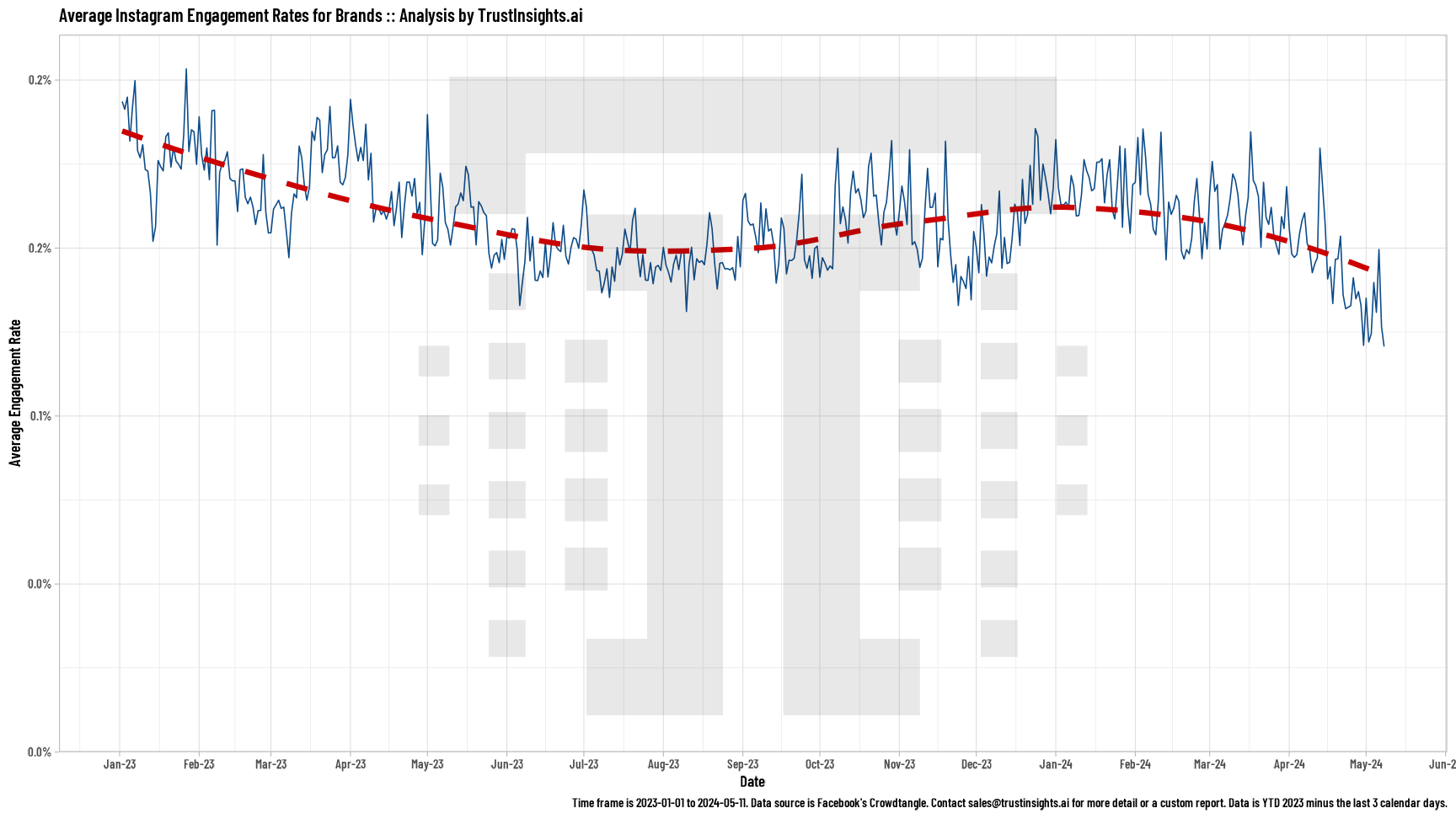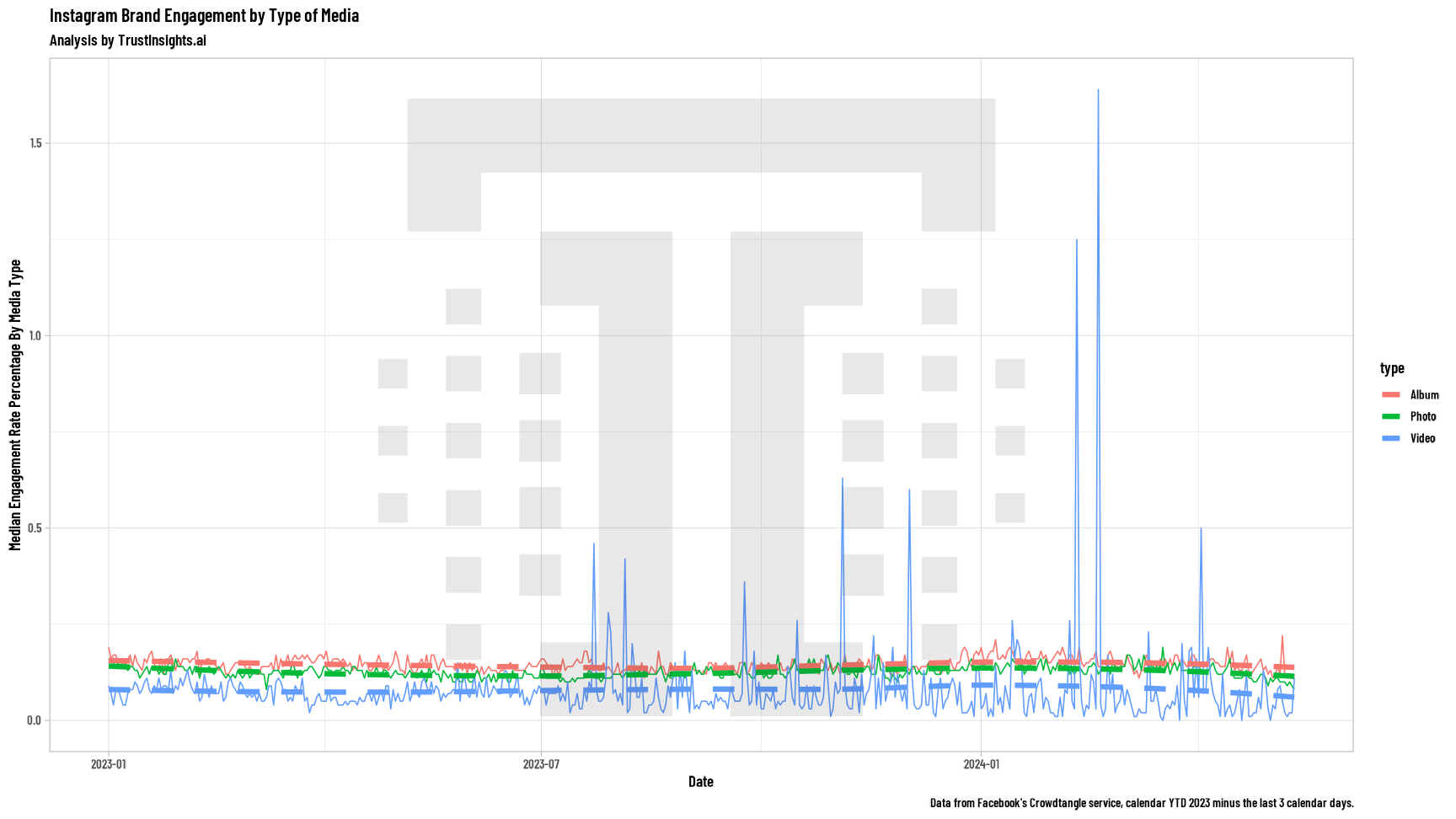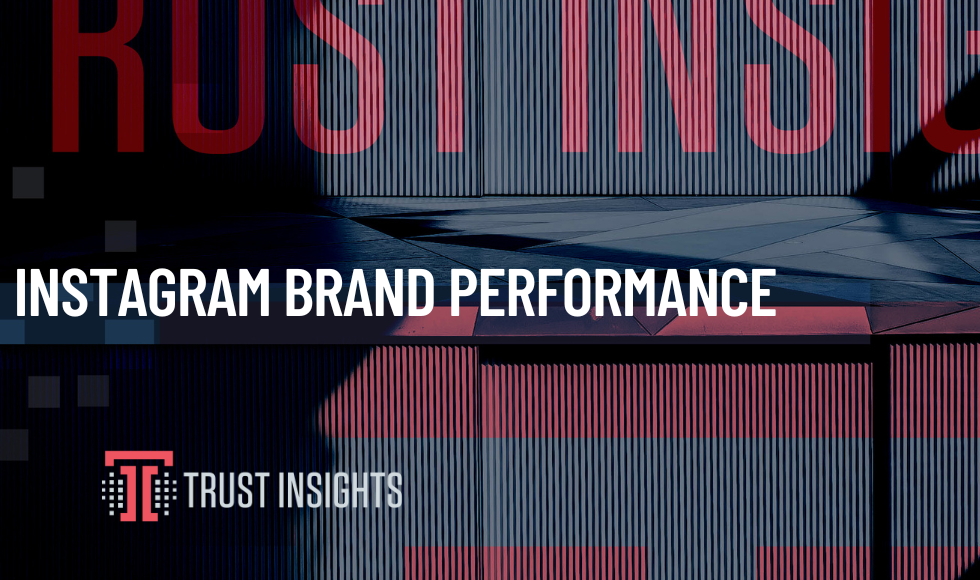This data was originally featured in the May 22nd, 2024 newsletter found here: INBOX INSIGHTS, MAY 22, 2024: MEASURING ROI IN 2024, INSTAGRAM BRAND PERFORMANCE
In this week’s Data Diaries, let’s revisit Instagram metrics. This series will be coming to an end in the middle of this year as Meta retires the data collection software that provides it, Crowdtangle. But until then, let’s see how things look.
This week, we’ll examine how brands have been doing on Instagram:

What we see broadly as we look at the last 2 years of brand performance is a roller coaster ride of sorts. At the beginning of 2023, brands had an average engagement rate of 0.19%; today, that’s around 0.12% as engagement ebbs and flows over the last 17 months.
That’s… not great. For context, a 0.12% engagement rate means 12 out of every 10,000 followers engages with a brand’s content.
When we dig into the specific media types that generate engagement, we see something unusual beginning in mid-2023 and carrying into 2024:

What we see are more and more video spikes. Video still has the lowest median engagement rate of the three different formats, but it’s getting more volatile over time; the likelihood that videos will break out and see abnormally high engagements is getting more frequent.
This begs the important question: why?
In a recent post by Instagram head Adam Mosseri, Meta announced that they’re continuing to make changes to the algorithm. One of the key changes they’ve made over the last year is to make the algorithm more TikTok-like. What does that mean? It means that less emphasis is placed on the account and more emphasis is placed on the topic of the post.
That means that even a small account can see runaway success on a single piece of content if it has the correct signals indicating it will spread well and be engaging to the audience. It also means the algorithm is less dependent on account size and follower size.
That’s a double edged sword for marketers. On the one hand, it alleviates the pressure to accrue followers for sake of having bigger numbers. In today’s Instagram algorithm, that’s less of a boon than it used to be. On the other hand, it increases the pressure to generate hits, to make every piece of content a grand slam. It requires rethinking the general strategy of posting for the sake of posting or posting low value content just to have something there, and instead making something that will take off. That requires much more effort, focus, cost, and creativity.
As we see the rise of generative AI and the tsunami of low effort content increase, quality of content will continue to matter more and more if we want the AI algorithms that power social networks to boost our efforts.








